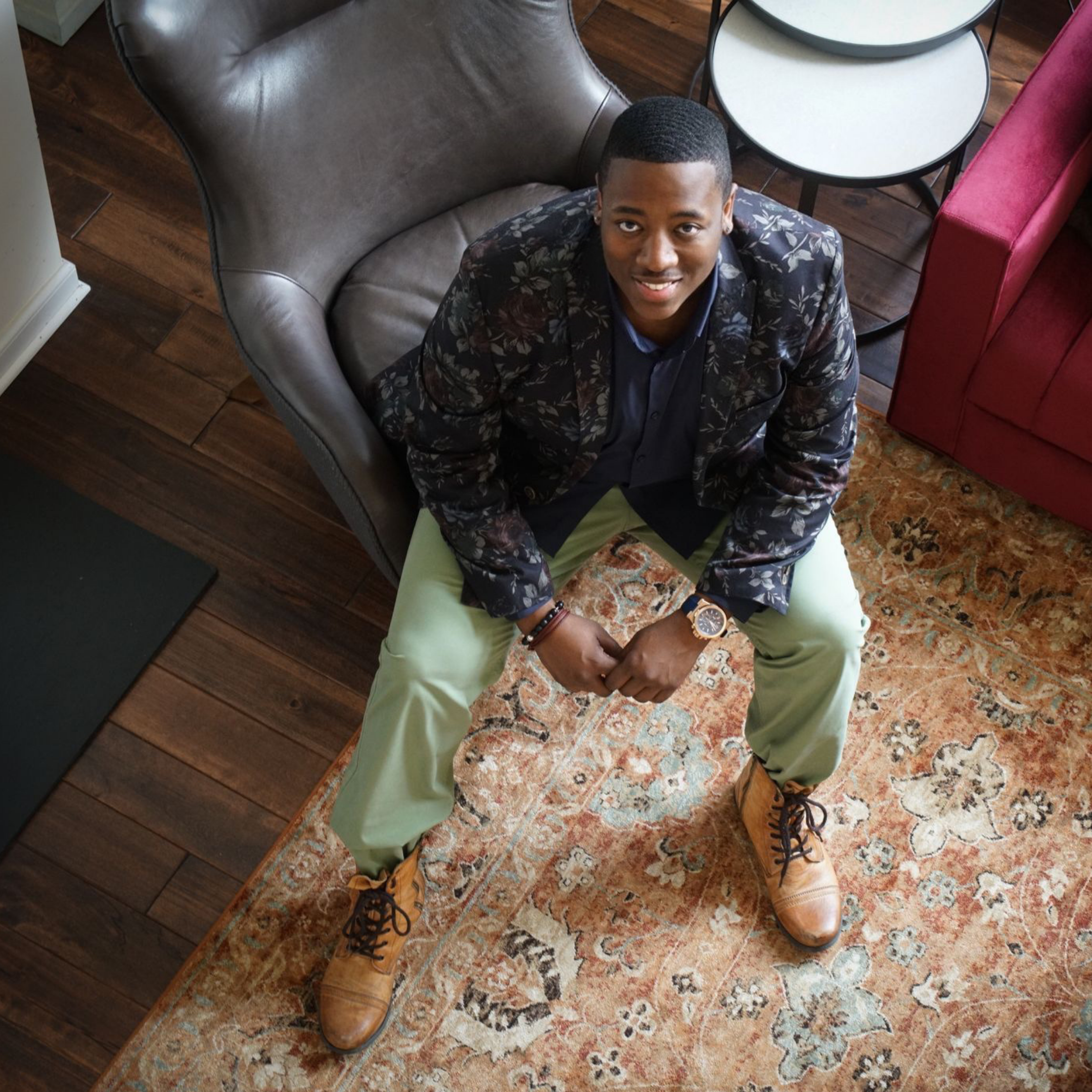Nile Johnson tells his kids all the time: He just knows when they’re not being honest. Likewise, the Philadelphia-based interior designer can walk into a room and know instantly who he won’t get along with or who will be a friend for life. A killer sense of intuition, he explains, is one of his greatest gifts.
That’s what made his choice to take on a client he didn’t mesh with all the more surprising. The way the working relationship unraveled—and what Johnson learned from it—is the heart of the debut episode of Trade Tales, a new podcast from Business of Home. Every other week, BOH editor in chief Kaitlin Petersen will talk to designers about nurturing creativity, figuring out a firm’s finances, setting goals and establishing boundaries. Johnson’s story of bouncing back from a nightmare client kicks off a series that explores what happens when designers take a risk, try something new, and discover their own version of success along the way.
Johnson graduated from The Art Institute of Philadelphia in 2007 at the outset of the financial crisis, just as design work began drying up all over the city. After jumping from job to job, he took a leap of faith in submitting an audition tape for HGTV’s Showhouse Showdown. Though the TV appearance wasn’t necessarily what brought in new work, Johnson credits winning the show with giving him the confidence to launch his own firm and take on a sudden influx of clients—including the dream pair who would eventually recommend him to his toughest client.
After inching forward in fits and starts, the incompatibility between client and designer ultimately doomed the project. Looking back, Johnson acknowledges that his intuition didn’t fail him—he just failed to listen to it. But instead of wallowing in defeat, he used the challenging experience as inspiration for improving operations at his boutique firm. “I think I am the same designer; I think what’s different is I have allowed myself to be supported with help that will allow the process and the creativity to flow simultaneously, so that everything flows together,” he says. “The designer in me hasn’t really changed. I think the business owner—that dial has been turned up.”
Listen to the episode and check out some takeaways below. If you like what you hear, subscribe on Apple Podcasts or Spotify—new episodes will debut every other Wednesday. This episode was sponsored by The Shade Store and SideDoor.
Hiring A Project Coordinator
Faced with a personality clash with a Type A client, Johnson found himself caught in a creative gridlock. After realizing that a lack of effective communication between him and the client caused the project to crumble, he brought on a project coordinator to serve as a go-between, infusing his business with the structure and process most clients need.
“It’s one thing to have a process in your head; it’s another thing to have it on paper. It’s great for clients to see, and it’s great for anybody coming on board to see,” says Johnson. “I find that because the creative part is so fluid, having something more rigid helps me. [My project coordinator] is like the bloodline of the business, and I see a difference in how clients respond and react, and what their expectations are.”
Setting Expectations Early On
In past projects, Johnson recalls showing clients dozens of options to no avail—only to realize that these wild-goose chases were the source of the problem. “If you’ve shown 67 chairs to somebody and they can’t pick a chair—that’s not you, that’s them. They are never going to pick a chair,” he says. “So we had to get super specific in every single way.” By establishing a firm process before a project begins, Johnson now prevents burnout and ultimately fosters mutual trust with clients. “You have to trust me and trust yourself,” he says of his clients. “Trust that you made a good decision in hiring a designer, and trust the process.”
Sharing Ideas Virtually
When scheduling conflicts lead to stretched-out project timelines, clients are bound to feel frustrated as the project stalls. To remedy this, Johnson crafts digital design boards and self-narrated screencast recordings, which he shares with clients virtually through the collaboration software Basecamp. He explains that this offers both parties some breathing room to digest his ideas, while also keeping projects rolling despite busy schedules. “The client can watch [their presentation] and hear me talk them through it, and I also drop in the individual slides so they can look at them at their leisure,” says Johnson. The secret is giving clients the tools to feel confident and in control as they move through the design process: “If I can give you ownership in the project, I’m happy to do that.”





























